deepeye.hu
Astronomical Drawings of Peter Kiss
Astronomical Drawings of Peter Kiss




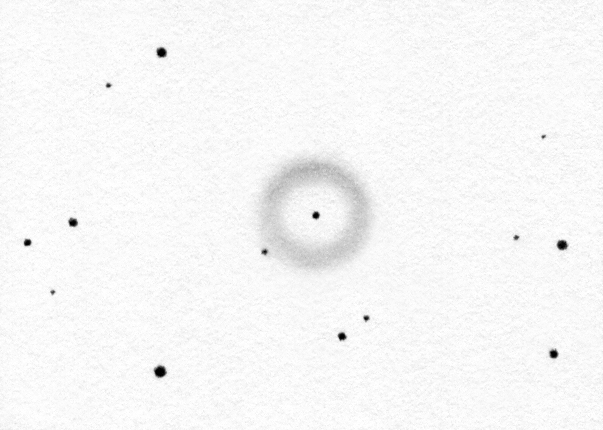
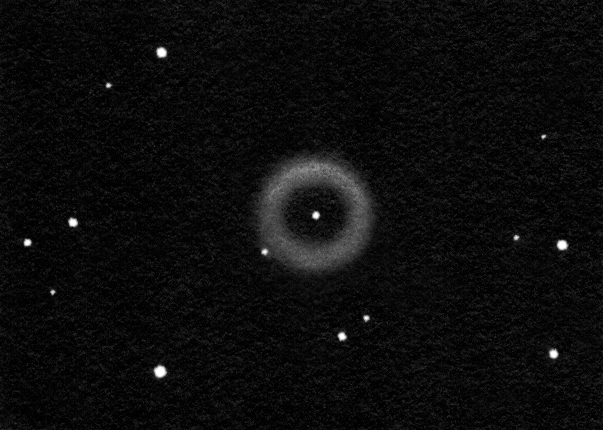
Shapley 1 was one of the most beautiful objects that we took a look at on our 2012 Namibian trip and I didn't draw. Hence it was pretty high on my wish list in 2016. Shapley 1 is an annular planetary nebula discovered by Harlow Shapley in 1936. It is about 4900 light years away and it's about 8700 years old. It is special beacause its central star is a spectroscopic binary with the axis of the orbit pointing directly towards us. What we see as a ring is actually a bipolar structure - in this case kind of a cylinder that we see almost exactly pole-on. The nebula's axis of symmetry and the double central star's orbital axis are approximately identical.
Shapley 1 is a beautiful sight in the 16" telescope visually in the perfect Namibian sky. It's a pretty bright and a perfectly symmetrical ring of smoke. The edges are not sharp but not very diffuse either. A slightly brighter thread runs through the western part of the ring (up in the drawing). The outer (upper) edge of this thread shows a little more contrast than the inner one. The differences in intensity are not big but clearly detectable.

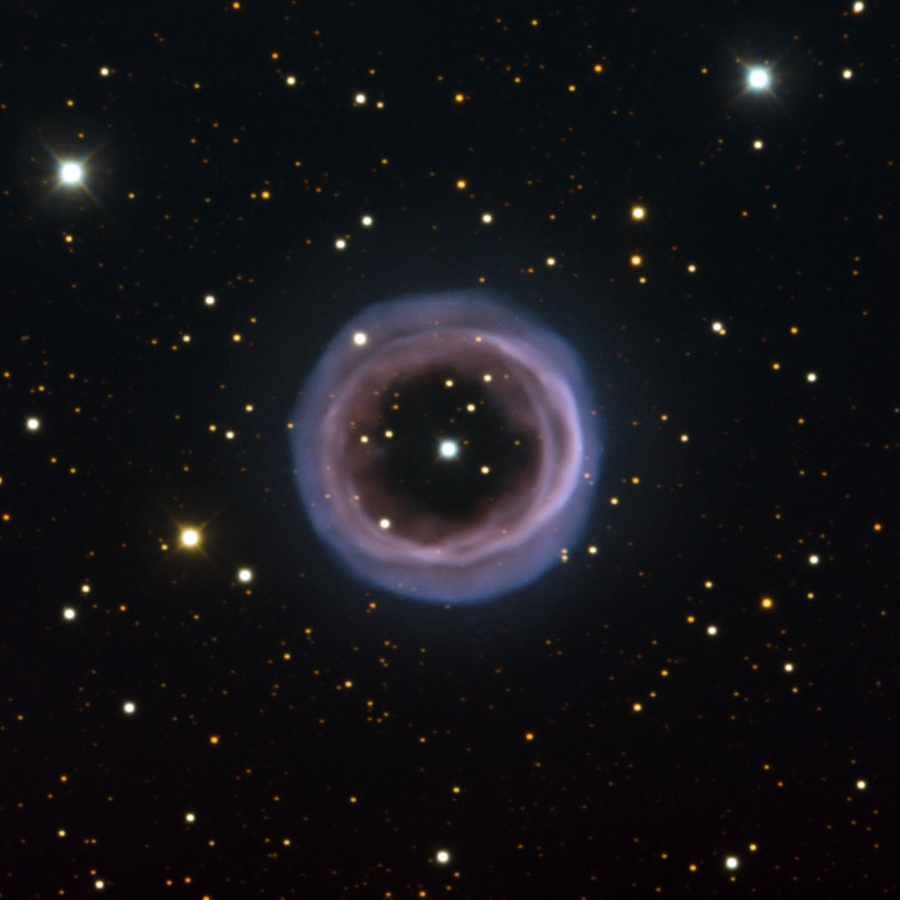
The photo on the left was made by ESO (European Southern Observatory) using the EFOSC2 instrument on the 3.5m NTT (New Technology Telescope). I rotated and croped my inverted drawing to show about the same patch of sky.
Comparing the photo and the drawing it turns out that the slightly brighter thread is an existing feature that I saw on the right place.
Further reading for those interested in the morphology of Shapley 1 and its connection to the double central star: Jones et al.: The morphology and kinematics of the Fine Ring Nebula, planetary nebula Sp 1, and the shaping influence of its binary central star (MNRAS, 2012)
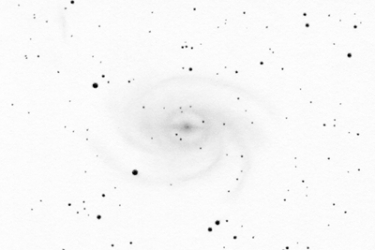
Pavo galaxy
The grand spiral galaxy of Pavo
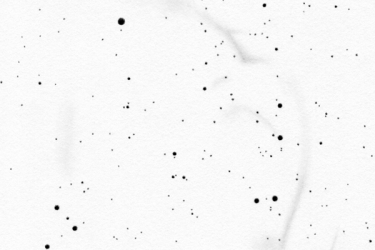
Panorama drawing
Huge and faint supernova remnant in the southern sky
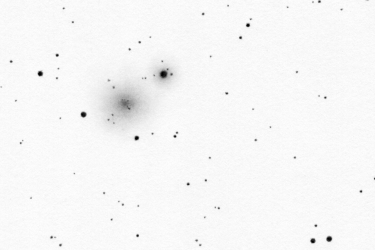
Centaurus globular cluster
The second globular in Centaurus

Apus globular cluster
Globular cluster close to the Southern celestial pole
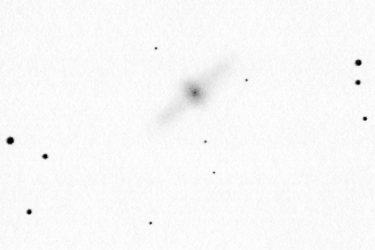
Centaurus galaxy
Polar ring galaxy
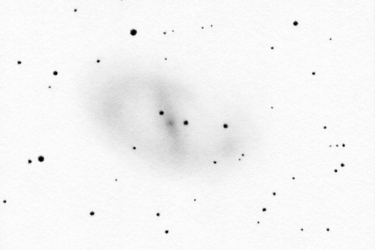
Ara galaxy
Barred spiral galaxy in the thick of the Milky Way